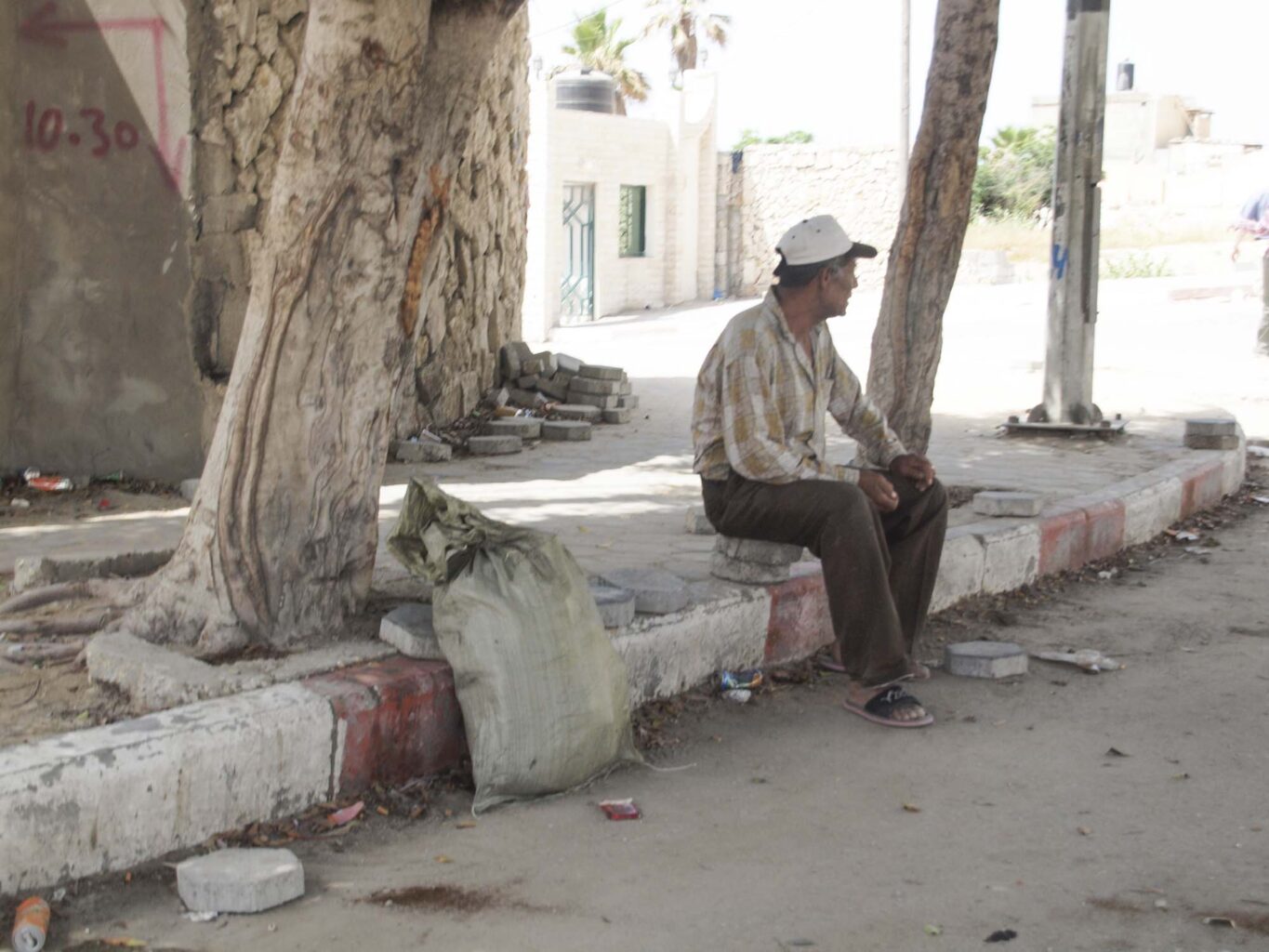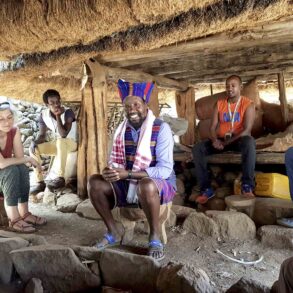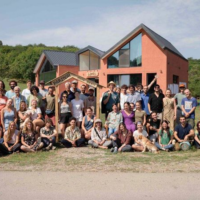Minka and Martin Straube worked on The Friends of Waldorf Education’s emergency pedagogy mission in the Gaza Strip several times between 2010 and 2014. They spoke with Wolfgang Held about their impressions and perspectives from this traumatized area.
How did your work in the Gaza Strip begin?
Minka Straube It was a completely different situation than today after the Hamas bloodlust on October 7. I was there for the first time with a multi-professional group in 2010, with the Samouni clan. We were working in an HGV [heavy goods vehicle] garage. The Israeli army had just invaded the garage, so the people I met had experienced the full force of the attack. We set up a trauma education team with local people in cooperation with the Al-Qattan Center in Gaza. This center was started by a rich Arab family committed to education, who have also set up a library and support our work. Sixty percent of the population is children and young people, and illiteracy is high, so education is very important.
Initially, we worked with the children, but soon realized that if we wanted to remain sustainable, we would have to recruit new teachers. Five years of work resulted in the Narva Center, which is also home to a Waldorf kindergarten and offers recreational activities. We were very impressed by what people there have achieved. For us, it was always about the children. Our work was not politically motivated, not anti-Israel nor anti-Semitic—on the contrary. After all, we’d been asked to work there by Israeli friends, who were saddened by what had happened to this area in the name of Israel. It was a different situation than today, following October 7th.
What was the Gaza area like back then?
Martin Straube Let’s start with Gaza City. It’s incredibly busy, with an endless number of people. Traffic winds between the houses, some of which are badly damaged. There’s a lot of noise and no rules. Among the cars are vehicles pulled by donkeys or horses. Since the electricity often goes off, the loud hum of generators is heard everywhere, and, of course, you can also hear the muezzins. It’s dusty because it hardly ever rains. There are almost no green spaces because there is so little water. At the time we were there, the only freshwater river was blocked off by Israel. It’s glaringly bright.
And then, the people amongst all this! They sit on the side of the road and stare into the air because their outlook is so bleak. There are no playgrounds. The little ones can hardly leave the house because of the insane traffic raging outside the front door. The children stay at home so that their parents can work. You see hopelessness everywhere. There are an incredible number of children and young people with no prospects.

Minka There are also oases of hope. There’s a place in a high-rise housing estate where it is green all of a sudden. Out of nothing, the people there have built something nice—a small café where artists meet, make music, and paint. What art emerges from this small country! Choreographer Royston Maldoom, who made the Berlin film Rhythm Is It!, also worked in Gaza. He brings people here who try to create something new. One participant from our continuing education program, originally from the Gaza Strip, is now giving a hip-hop course for young people in a UNHCR [United Nations High Commissioner for Refugees] camp there. In this way, they try to compensate for the desolation they experience.
Here’s a little story: We were in Gaza and wanted to go to the harbor, and then we met a participant from one of our courses. We asked: “So, tell us, what are you doing now?” “I paint! I paint, even though everyone tells me I don’t paint it the way it’s supposed to look.” “And why do you paint like that?” I asked him. He said: “Today, I am able to be here; and tomorrow, there might be two of us, and the day after tomorrow, three.” We were touched by such confidence.
Martin You have to imagine, Gaza is the size of Bremen [or Las Vegas], but with three times as many people and surrounded by a wall. The Berlin Wall is so low in comparison that you might as well jump over it. The barrier around Gaza is much higher. The Erez crossing (which we used to get in) leads you through the Israeli checkpoint first, and then you walk almost a kilometer through an iron-fenced corridor, like the ones in a circus where the lions come into the ring, only taller. There’s a rusty and dented wheelchair for people who can’t walk, and there’s only one. You walk over a piece of no man’s land—the surrounding area is full of mines. Then there are two checkpoints on the Gaza side, one by Hamas and one by the PLO, and then you’re in. You have to figure about half a day for this procedure. That only applies to us. The people in Gaza can’t get out at all, with a few exceptions for medical reasons; otherwise, only via Egypt.
The country produces almost nothing itself; it is completely dependent on shipments from Israel and Egypt. When another truck arrives from Egypt, cars line up all over the place for a few liters of gasoline. It’s unbelievable chaos. Basically, there is just constant need. What impressed us so deeply among all this hardship were the people—these wonderful people—educated, radiant, who just want to live in peace. They have nothing to do with Hamas. I’m sure they detest the excesses of violence of October 7 just as much as we do.
How big is the resentment against Israel?
Minka Big. At the same time, they are very hospitable people. As soon as you enter a house, you are a member of the family. I was also there in 2014 when Gaza was bombed by the Israeli army. Of course, it was on my conscience, I felt bad about leaving Gaza again. But they told me: “Take the team and go! We couldn’t live with the guilt if something were to happen to you here.”

These people also suffer under Hamas. Once, a demonstration against Hamas was planned and a waiter we knew went. When he came back, we saw a broken man. The Hamas fighters had picked him up before the demonstration even started, and then they put him on public display in a cage.
What makes me so sad now is that the retaliatory attacks are breeding a new generation of Palestinians who will hate again, perhaps even more, in view of the war that is now imminent in Gaza. These people, who have nothing to do with Hamas, just want to live.
What hope do you have if the war starts now?
Minka What hope do I have? I hope that the people working positively in Gaza have the strength and fortitude to continue their work. Of course, we hope the care for people on the ground will continue, including the medical care. My third hope, my wish, is that people will be allowed to live where they want and that they will not be kept in the world’s largest prison. When we were in the Gaza Strip, a ship was on its way from Turkey with medical supplies. It didn’t arrive because it was intercepted by the Israeli navy. We were told in Gaza: “It’s not important if the ship arrives. It’s important that it set off.”
Martin We asked our friends in Gaza what we could do to help when we got back to Germany. “Tell people about us so they don’t forget us.” Those are the kind of statements that get into your bones.
More Friends of Waldorf Education Emergency Pedagogy
Translation Joshua Kelberman
Title Image Gaza, photographs taken in 2023, Minka Straube














Minka Straube writes of “the Hamas bloodlust of October 7” on November 17 after 6 weeks of unspeakable murder by Israeli and U.S. weapons, warplanes, artillery, drones, tanks, and soldiers of the defenseless people of Gaza, about which she is silent, giving consent, and making you and her complicit.
Has your newsletter lost all human feeling, conscience, capacity for truth?
John Schuchardt
House of Peace Ipswich,Massachusetts